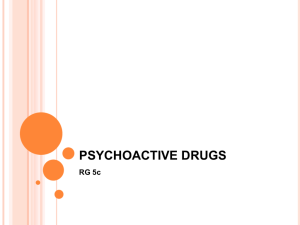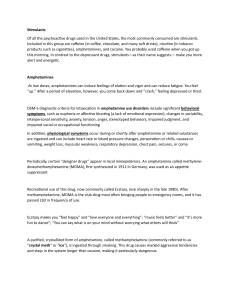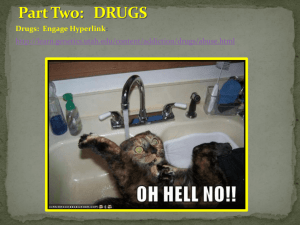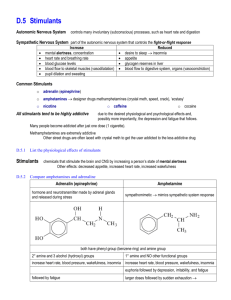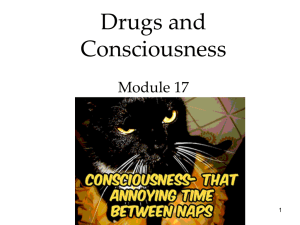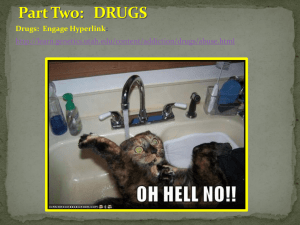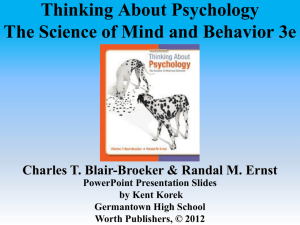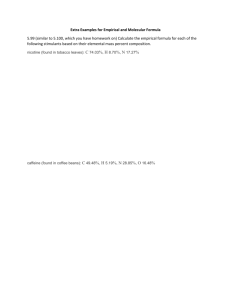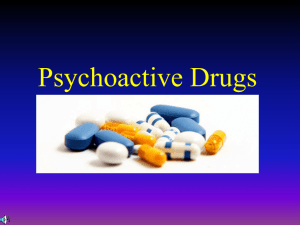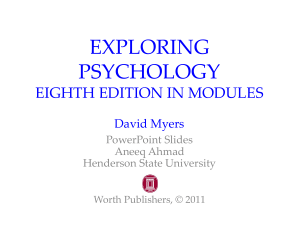Thinking About Psychology: The Science of Mind and Behavior
advertisement
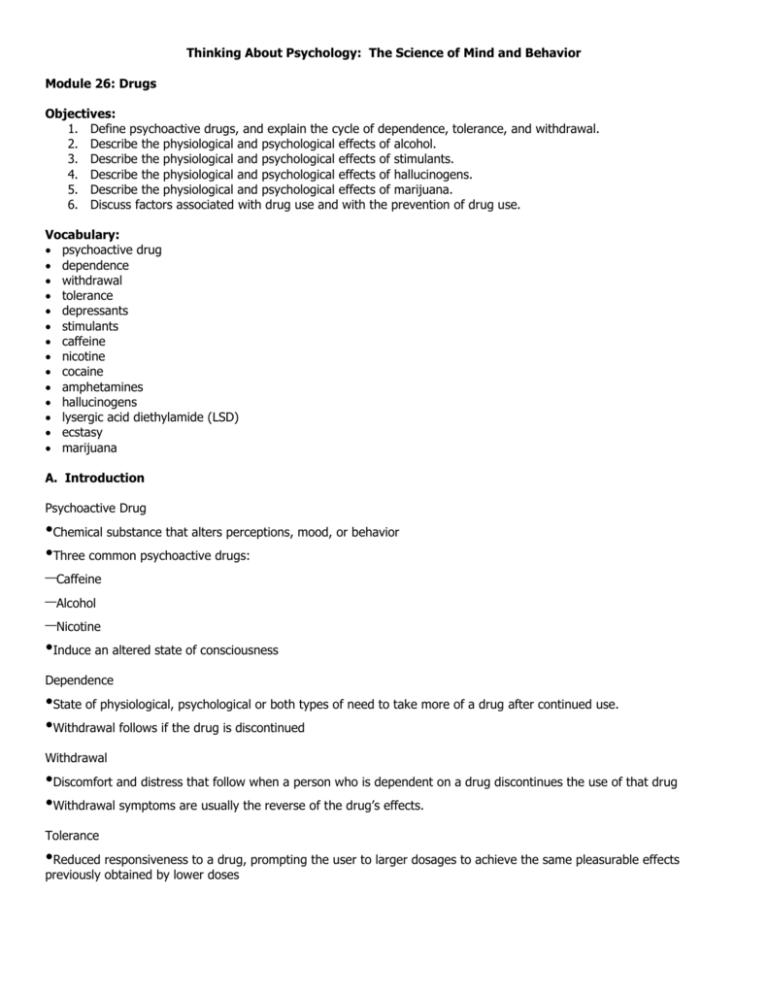
Thinking About Psychology: The Science of Mind and Behavior Module 26: Drugs Objectives: 1. Define psychoactive drugs, and explain the cycle of dependence, tolerance, and withdrawal. 2. Describe the physiological and psychological effects of alcohol. 3. Describe the physiological and psychological effects of stimulants. 4. Describe the physiological and psychological effects of hallucinogens. 5. Describe the physiological and psychological effects of marijuana. 6. Discuss factors associated with drug use and with the prevention of drug use. Vocabulary: psychoactive drug dependence withdrawal tolerance depressants stimulants caffeine nicotine cocaine amphetamines hallucinogens lysergic acid diethylamide (LSD) ecstasy marijuana A. Introduction Psychoactive Drug •Chemical substance that alters perceptions, mood, or behavior •Three common psychoactive drugs: –Caffeine –Alcohol –Nicotine •Induce an altered state of consciousness Dependence •State of physiological, psychological or both types of need to take more of a drug after continued use. •Withdrawal follows if the drug is discontinued Withdrawal •Discomfort and distress that follow when a person who is dependent on a drug discontinues the use of that drug •Withdrawal symptoms are usually the reverse of the drug’s effects. Tolerance •Reduced responsiveness to a drug, prompting the user to larger dosages to achieve the same pleasurable effects previously obtained by lower doses B. Alcohol: A Depressant Depressants •Drugs that reduce neural activity and slow body functioning •Includes alcohol and sedatives •Found in beer, wine, and liquor •The second most used psychoactive drug (caffeine first) •Slows thinking, and impairs physical activity Blood Alcohol Content (BAC) •A measure of how much alcohol is in a person’s bloodstream •BAC of .8 considered legal intoxication in most states Euphoric Affects of Alcohol •Alcohol impairs the parts of the brain responsible for controlling inhibitions and making judgments Alcohol, Memory, and Sleep •Studies have shown that alcohol impairs memory by suppressing the processing of events into long term memory. •Alcohol impairs REM sleep, further disrupting memory storage. C. Stimulants Stimulants •Drugs that excite neural activity and speed up body functions •Include: caffeine, nicotine, amphetamines, and cocaine Caffeine •Stimulant found in coffee, chocolate, tea, and some soft drinks •Provides user with a sense of increased energy, mental alertness, and forced wakefulness •Blocks neurological receptor sites that, if activated, sedate the central nervous system Nicotine •Stimulant found in tobacco •Effects similar to those of caffeine •Very addictive and does not stay in the body very long Cocaine •Stimulant derived from leaves of the coca plant •Crack – cocaine crystals •Blocks the reuptake of certain neurotransmitters •Dependency is quick and severe; places extreme strain on cardiovascular system Amphetamines •Drugs that stimulate neural activity, speeding up body functions •Include increased energy and mood changes •Includes: speed, uppers, and methamphetamines •Mimic adrenaline •Can cause irreversible changes in mood D. Hallucinogens •Psychedelic drugs that distort perceptions and evoke sensory images in the absence of sensory input •Include: LSD and ecstasy •Sometimes called “psychedelics” meaning mind-manifesting Lysergic Acid Diethylamide (LSD) •Powerful hallucinogenic drug •Also known as “acid” •The effects vary from person to person •Users can be dangerous to themselves and others. Ecstasy •Hallucinogenic drug that produces lower inhibitions, pleasant feelings, and greater acceptance of others •Also called MDMA •Even moderate users may experience permanent brain damage. E. Marijuana •Leaves, stems, resin, and flowers form the hemp plant that, when smoked, lower inhibitions and produce feelings of relaxation and mild euphoria •THC (delta-9-tetrahydrocannabinol) is the active ingredient •Disrupts memory; lung damage from smoke F. Prevention

